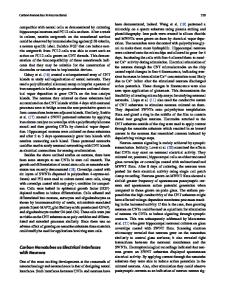On the role of carbon nanotubes addition in carbon fiber-reinforced magnesium matrix composites
- PDF / 3,095,301 Bytes
- 14 Pages / 595.276 x 790.866 pts Page_size
- 47 Downloads / 343 Views
On the role of carbon nanotubes addition in carbon fiber-reinforced magnesium matrix composites Jiming Zhou1,2,*, Kangdi Zhong1,2, Chentong Zhao1,2, Haiming Meng1,2, and Lehua Qi1,2
1 2
School of Mechanical Engineering, Northwestern Polytechnical University, Xi’an 710072, People’s Republic of China Shaanxi Key Laboratory of Fiber Reinforced Light Composite Materials, Northwestern Polytechnical University, Xi’an 710072, People’s Republic of China
Received: 29 April 2020
ABSTRACT
Accepted: 19 July 2020
Introducing carbon nanotubes (CNTs) to form a multiscale reinforcing structure is regarded as an unique approach to effectively improve the interface property of metal matrix composites. Curved CNTs were grafted onto the surface of the carbon fiber fabrics by injection chemical vapor deposition, and pieces of fabrics were further stitched into preform. Carbon fiber grafted with CNTs-reinforced magnesium matrix composites (CNTs-Cf/Mg) was prepared by squeeze casting. The influence of grafted CNTs on the interfacial microstructure and mechanical properties was investigated. The results showed that the carbon fiber preform grafted with CNTs was fully infiltrated with the melt matrix alloy. The larger Al8Mn5-phase particles were refined by grafted CNTs, and a transition layer of Al8Mn5/CNTs was formed on the surface of carbon fiber. Tensile strength and bending strength of the CNTs-Cf/Mg composite were significantly increased compared to the composite without grafted CNTs by 33% and 29%, respectively. The fracture morphologies confirmed that the enhanced plasticity of matrix alloy near the interface prevented obvious debonding after grafting CNTs on carbon fiber. The main operative mechanism by CNTs was attributed to optimized interface fracture behavior. This could be a very prominent method to adjust the interface structure and improve the properties of composites.
Published online: 16 September 2020
Ó
Springer Science+Business
Media, LLC, part of Springer Nature 2020
Introduction As a structural and functional material, carbon fiberreinforced magnesium matrix composites (Cf/Mg) combine the advantages of magnesium alloy and
carbon fiber that exhibit excellent properties, which have broad application prospects in aerospace and automotive industries [1–6]. However, strong thermal residual stress is generated near the interface of the Cf/Mg composite due to the mismatch of the thermal expansion coefficient between the carbon
Handling Editor: Catalin Croitoru.
Address correspondence to E-mail: [email protected]
https://doi.org/10.1007/s10853-020-05127-y
J Mater Sci (2020) 55:16940–16953
fiber and the magnesium matrix, which seriously weakens the effective load transfer at the interface. In addition, manganese is one of the important alloying elements on the AZ91D alloy, which is added to eliminate the harmful effect of iron on the corrosion resistance by forming Al–Mn particles. Al–Mn particles are habitually observed within the grains and at the grain boundaries in the AZ91D alloy die-cast samples and their
Data Loading...











